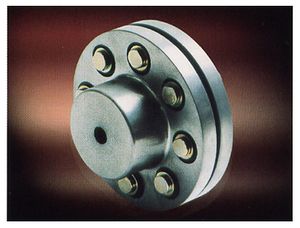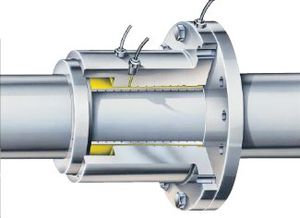Flange Couplings
Flange Coupling is a driving coupling between rotating shafts that consists of flanges one of which is fixed at the end of each shaft, the two Flanges being bolted together with a ring of bolts to complete the drive.
A flange coupling meant to bring two tube ends together in a flush, sealed manner. This two-piece coupling unit consists of a keyed receiving side for the flanged end to be fastened to, so it may be married to the opposing tube end, which also has a flanged end. Each flange has either a male or female coupler opening so that when the two ends are brought together, they are aligned without causing resistance or drag in the material being passed through them. This male or female coupling method also creates a stable connection that is resistant to shifting, keeping the flange coupling sturdily in place.
Flange couplings are typically used in pressurized piping systems where two pipe or tubing ends have to come together. The connecting methods for flange couplings are usually very strong because of either the pressure of the material or the sometimes hazardous nature of materials passed through many industrial piping systems. High thread count nut and bolt connections are used to secure the flange couplings in place. These nuts and bolts are usually made from tempered steel or alloys to provide enduring strength and the ability to be tightened to the utmost level to ensure the piping system doesn’t leak at any flanged junction. Most flange couplings utilize four, six, or up to 12 bolt assemblies.

